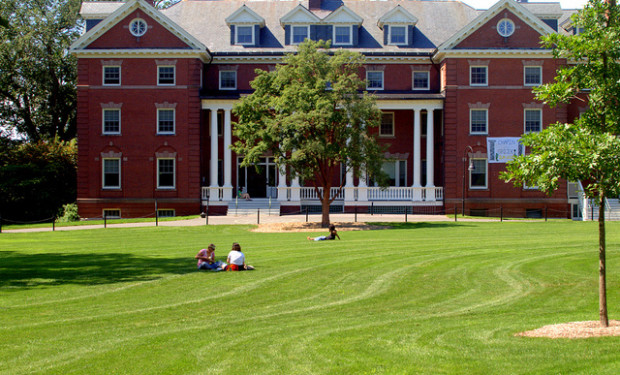Are women’s colleges necessary—or even legal?
Now that more than fifty percent of undergraduate students are women, what is the purpose of female-only higher education?
Editor’s Note: This article is the first in a three-part series on legal issues facing women’s colleges.
More than a century before Winston-Salem State University was founded and almost two centuries before Wake Forest University made the move to “The Twin City,” a group of Moravian settlers established a school for girls in their newly formed town called Salem. Now known as Salem College, the school began awarding college degrees in the 1890s. With a history of educating young women that spans almost two and a half centuries, the school has the distinction of being the longest-running women’s college in the United States.
A lot has changed since the Moravians held their first classes in 1772, and now some people wonder whether there is still a need for women’s colleges. Opponents argue that the problem women’s colleges were created to solve—lack of higher education opportunities for women—has been resolved. According to the National Center for Education Statistics, fifty-six percent of undergraduate students in 2012 were female. College enrollment has risen faster among women, with a fifty-two percent increase in number of women enrolled since 1990 compared to a forty-three percent increase for men. The trend is projected to continue with female enrollment expected to increase by eighteen percent between 2012 and 2023, while male enrollment is only expected to increase eight percent during that time.
Though only two percent of American female college graduates attended a women’s college, more than twenty percent of women in Congress and thirty percent of rising female business leaders in 2012 were graduates of women’s colleges.
Supporters of women’s colleges argue that these institutions create an experience for their students that cannot be matched by other programs. The Women’s College Coalition, an organization that provides support for forty-three member institutions in the United States and Canada, includes small class sizes, individualized attention, a strong sense of community, and better mentorship opportunities for female students as advantages women’s colleges have over traditional coed institutions. Alumnae of “The Seven Sisters,” a group of women’s colleges in the Northeast widely considered the “female equivalent of the Ivy League,” often point to the prestige and quality of the education they received at their alma mater and the networking opportunities it provides as reasons to pick Bryn Mawr over UPenn and Wellesley over Harvard. Though only two percent of American female college graduates attended a women’s college, more than twenty percent of women in Congress and thirty percent of rising female business leaders in 2012 were graduates of women’s colleges.
Many opponents openly wonder how a single-sex college could be legally allowed to exist. In 1982, the U.S. Supreme Court struck down an all-female admissions policy at a state-run nursing school. The majority in Mississippi University for Women v. Hogan found that the policy violated the Equal Protection Clause of the Fourteenth Amendment. The State’s purported interest in the policy, increasing educational opportunities for women, was a solution looking for a problem. Justice O’Connor wrote that “the year before the School of Nursing’s first class enrolled, women earned 94 percent of the nursing baccalaureate degrees conferred in Mississippi and 98.6 percent of the degrees earned nationwide.”
Fourteen years later in United States v. Virginia the Supreme Court again found the State’s interest in a single-sex admissions policy insufficient and struck down the Virginia Military Institute’s all-male policy, yet Justice Ginsburg made sure to carve out an exception for private single-sex institutions. At this time private status is the key to existence for all women’s colleges and no challenges have yet been brought against a private institution’s single-sex admissions policy. The time for such a challenge is ripe as transgender students begin to fight for admission to single-sex colleges associated with their gender identity, which may not always match their legal documents.






